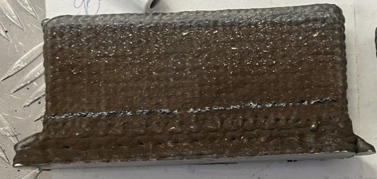PNIPU has determined how the welding strategy impacts the structure of steel.
The article has been published in the journal "Bulletin of PNIPU. Machine Engineering, Materials Science." The research was conducted with financial support from the Ministry of Education and Science of Russia as part of the project "Science and Universities."
Martensitic aging steels possess high strength and toughness while maintaining ductility. These characteristics ensure the reliability and durability of structures, which is particularly important under extreme operating conditions in aviation and space technology.
Additive manufacturing is a promising innovative method for producing products by adding material layer by layer. This technique is used to create both small and large components. For creating sizable products, arc surfacing is employed, where metal is added to the surface of the item using an electric arc. The advantages of this method include high speed (1-10 kg/h) and relatively inexpensive equipment.
During the process of electric arc surfacing, metals undergo complex thermal influences, which can significantly affect their microstructure and mechanical properties. Products created using additive technologies should not be inferior in strength to those made using traditional methods such as casting, stamping, and forging.
The situation can be improved by altering the layer deposition method. Scientists from Perm Polytechnic have utilized special strategies for surfacing and examined how their chemical and phase components differ.

"To study the structure and mechanical characteristics of the processed martensitic aging steel alloy, we printed blanks in the form of a flat wall measuring 150×80 mm, from which we later cut samples in both longitudinal and transverse sections. The SMT method was chosen for printing – a process that allows for metal surfacing with minimal heating," explains Tatyana Olshanskaya, a professor at the Department of Welding Production, Metrology, and Materials Technology at PNIPU, Doctor of Technical Sciences.
"The comparative analysis of chemical compositions showed that the steels obtained by the SMT method (Cold Metal Transfer) with various surfacing strategies are close in their chemical composition. The analysis of the crystalline structure also demonstrated approximately the same number of structural phases in both samples," clarifies Ilya Masyagin, a graduate student at the Department of Welding Production, Metrology, and Materials Technology at PNIPU.
The research conducted by scientists at Perm Polytechnic confirmed that changing the surfacing strategy of martensitic aging steel using the SMT method results in almost no differences in macro- and microstructure. The SMT method allows for achieving high-quality products and can be applied in practice in rocket technology, astronautics, and the aviation industry, where the strength and reliability of structures are critically important.